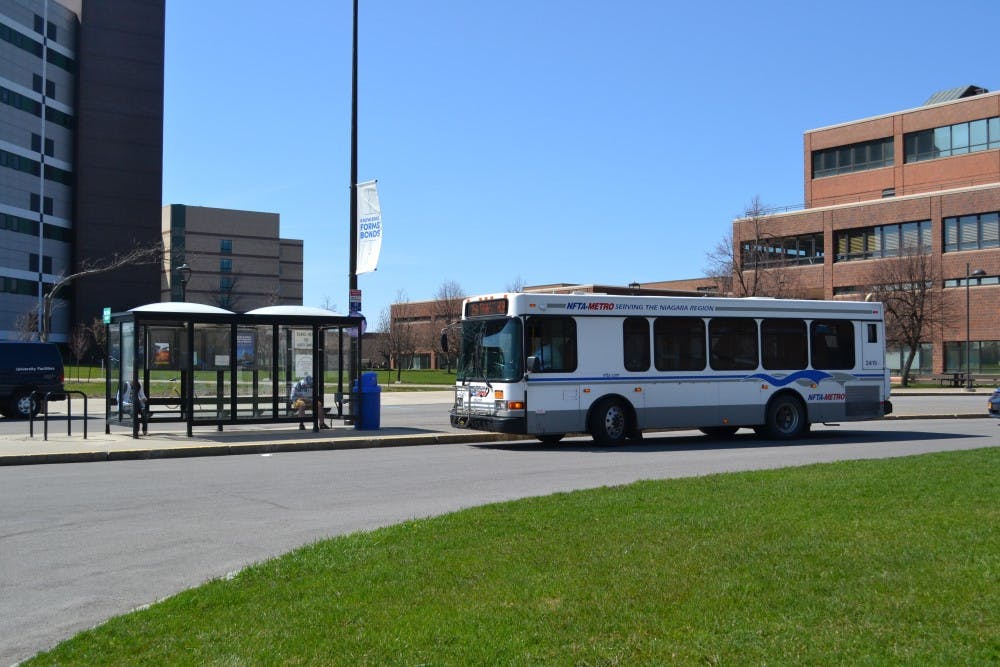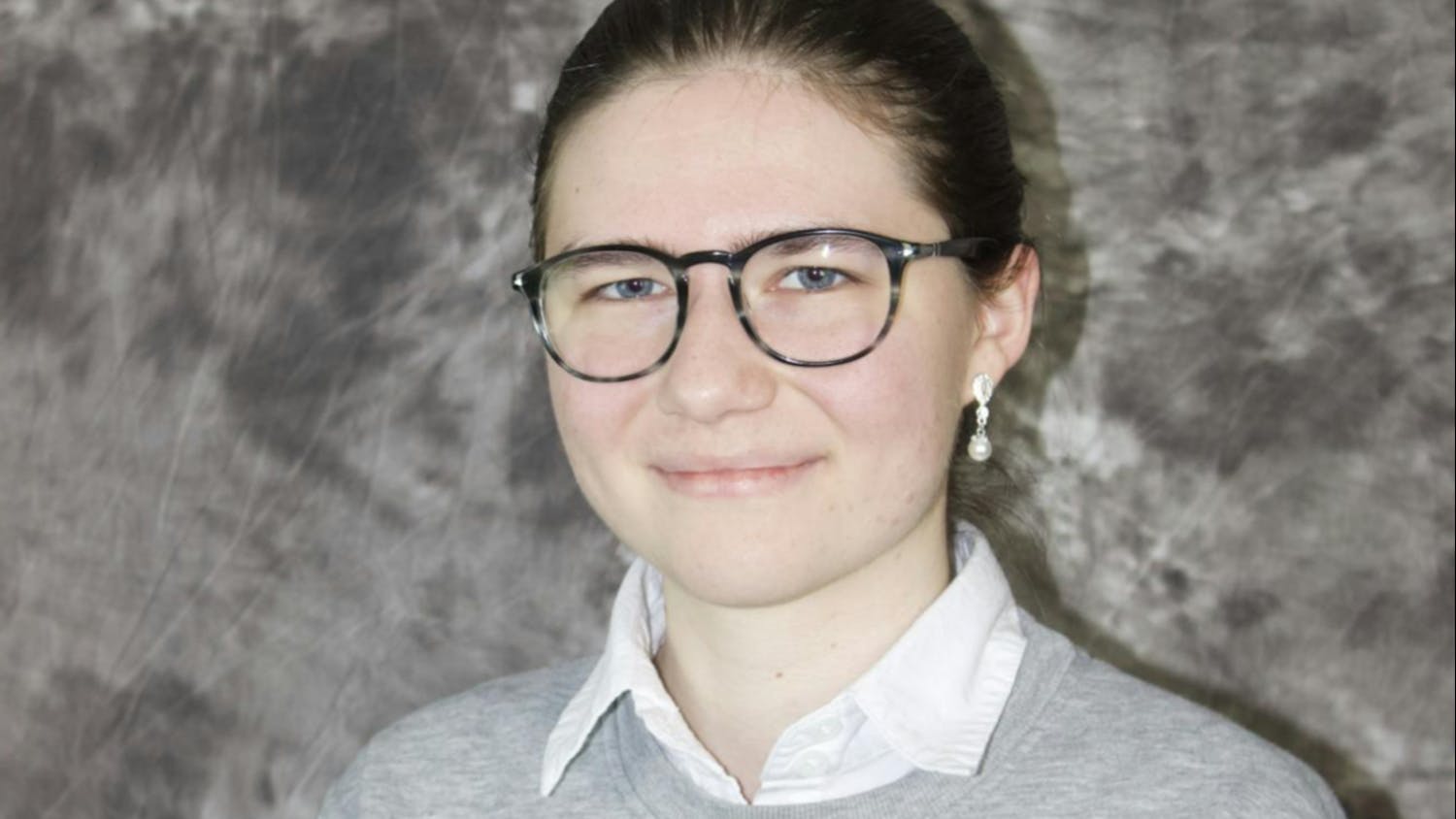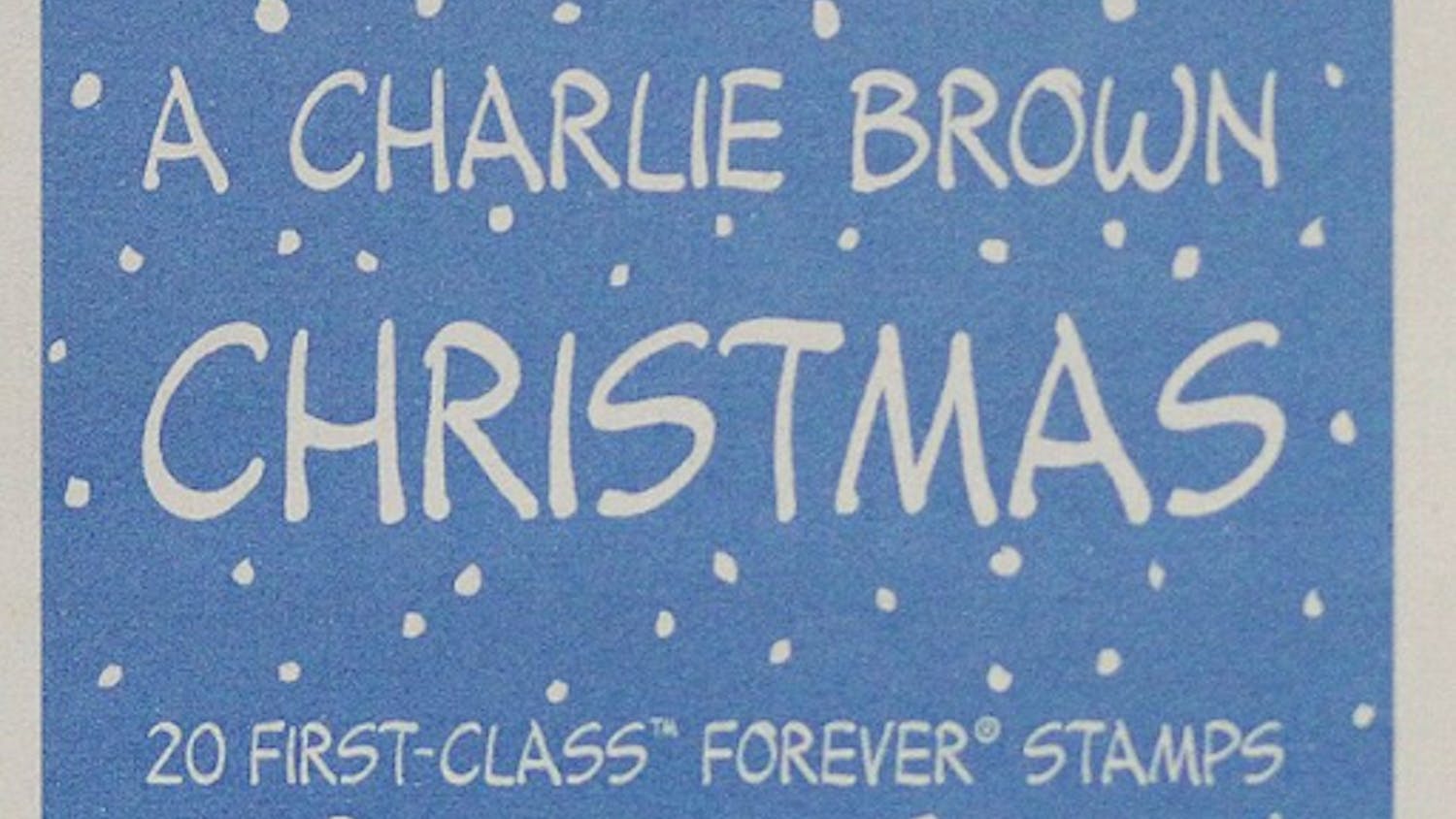Buffalo-Niagara boasts a vibrant art scene and buzzing nightlife, reeling in tourists from all over the country. Buffalo is home to some of the greatest architectural delights in New York and the renowned Anchor Bar; UB students have the privilege of experiencing it all within four short years. It’s all 20 minutes away — if you have a car, that is.
Thankfully, there are other options for students without cars looking to explore the city. UB’s own Stampede lines transport users between North Campus and South Campus for free. On the weekends, they travel to downtown Buffalo’s shopping center and to local stores in Amherst.
The Stampede’s itinerary is limited, but students can see more of the Buffalo-Niagara metro area with the NFTA.
The Niagara Frontier Transportation Authority (NFTA) operates dozens of bus lines around the Buffalo area and a subway line down Buffalo’s Main Street.
With downtown-bound Ubers priced at $15-20 per trip, the NFTA stands as a cheaper alternative. One-way trips cost $2, and a day pass costs $5. Weekly ($25) and monthly ($75) passes are recommended for extensive bus use. All passes can be purchased in cash or with card through the new MetGo app. (Free NFTA bus passes are only provided for students at the Jacobs School of Medicine.)
While not quite as convenient as an Uber, students who spoke to The Spectrum said the NFTA was (at least relatively) reliable.
“Before I bought my car a few weeks ago, I was walking, riding the metro to every place I went,” Buffalo local Christian Jagiello, a freshman attending Erie Community College as a computer science major, said. “So yes, I definitely think it’s possible, but sometimes it’s a bit slow and you need to have good time management.”
How to get the most out of your NFTA bus pass
To get their money’s worth out of a weekly pass, users must ride three buses a day for at least five days, since buying a day pass for five days costs as much as a weekly pass.
Similarly, making a monthly pass worthwhile requires three bus rides a day for at least fifteen days, since buying day passes for fifteen days costs the same as buying a monthly pass.
The MetGo app has an automatic fare capping feature ensuring no rider will pay more than $5 a day no matter how much they ride. This makes using MetGo a better option than cash for paying fares if commuters are unsure of their end destination.
Cash users should be prepared to bring in the exact amount of change; NFTA drivers or machines do not return change.
There are two NFTA stops on UB’s North Campus, at Flint Circle and Coventry Loop. The stop at Flint Circle is just south of Capen Hall and the stop at Coventry Loop is southeast of Slee Hall. The 35 and 44 buses stop at Flint Circle while only the 35 stops at Coventry Loop.
South Campus is home to Main Street and University Station, which connects 11 bus lines.
Plan your trip
The NFTA’s official trip planner is a multipurpose tool that does everything from finding departure times to identifying landmarks. It helps users find the best way to reach a destination using their transit services. Enter your address along with the end destination and the trip planner will find the most optimal travel route. Buses can be singled out from the rail system in the “advanced options” dropdown. Additional information will be provided once you hit “get trip plan” to make your trip as seamless as possible. This includes fare, transfer information and the walking distance the bus doesn’t cover. The “route schedules” tab lists schedules of all the bus routes.
To find information about a stop, enter the stop ID into the “next departures and stops” tab on the trip planner site. Stop IDs are attainable via Google Maps or by checking the bottom of the bus sign at the stop. The stop IDs for Flint Circle and Coventry Loop are 18310 and 11490, respectively.
Finally, using the “Landmarks” tab, notable institutions such as airports, hotels, stadiums and banks are listed. When clicking on a landmark, a pin will be dropped on the map to mark its location, along with an overview. There are also “from here” and “to here” buttons that allow you to automatically set your coming and going destinations with ease.
Downtown Buffalo is an essential spot for sightseeing tourists and partying revelers. UB’s Stampede lines can get commuters within walking distance from the heart of downtown. It’s as simple as taking the Stampede or the Stampede Yellow Line to South Campus and transferring to the Stampede Blue Line.
But on days when the Stampede isn’t running, the best way to get to the center of downtown via NFTA is the 44 bus at Flint Circle. Take the 44 to Main Street and University Station, where you’ll switch to either the 8 or the metro line. Both will take you directly to the heart of downtown Buffalo. It’ll cost around $4 and the trip will last an hour. For the best way back, take any bus or train that goes to University Station and then catch a 44 directly back to Flint Circle.
“The metro system is really short in Buffalo. It’s not really useful unless you’re going to the city,” freshman aerospace student and Buffalo local Kyle Kincaide said. “From Main Street to Main Street, that’s kind of the joke we make.”
The NFTA can be inconsistent at times. Since the bus lines have so many stops to service, trips that can take a few minutes by car can be dragged out exponentially if buses aren’t running smoothly.
“A car commute of 16 minutes can easily turn into an hour or more with these bus routes,” remarked Julyana Bholai, a first year interior design major at Buffalo State College. Bholai opts in for Ubers when she needs to be somewhere quickly.
It is vital to check bus schedules beforehand to set aside time in case of delays, which can be found here.
The features desk can be reached at features@ubspectrum.com
Ferdinand Babiano is a contributing writer.





